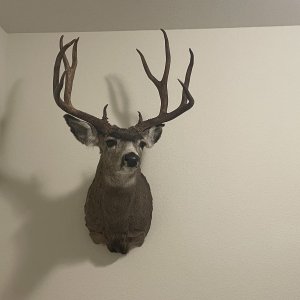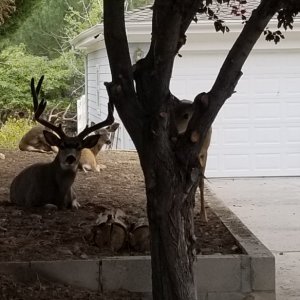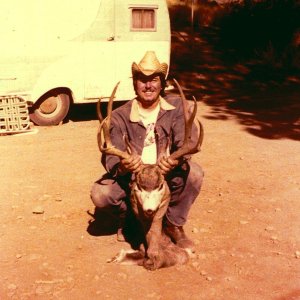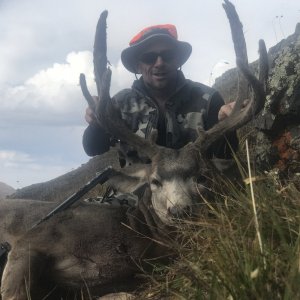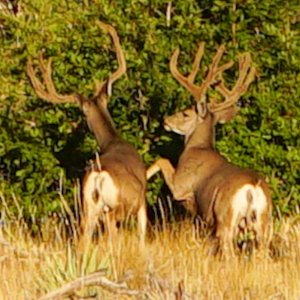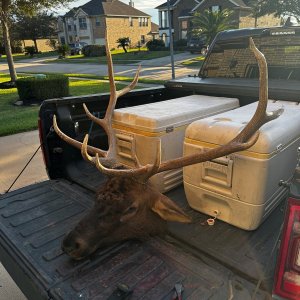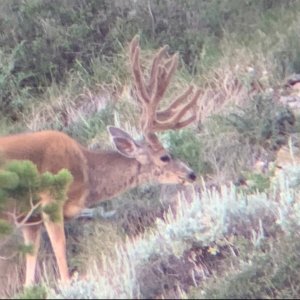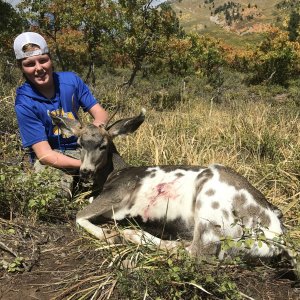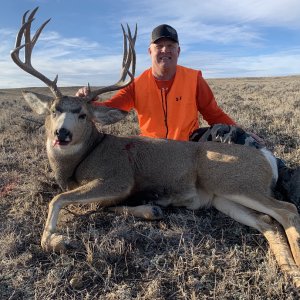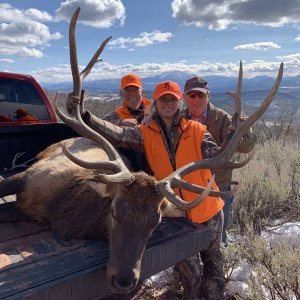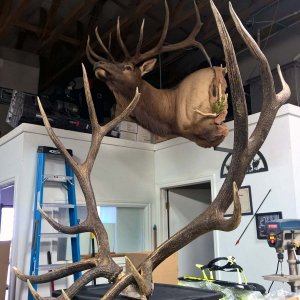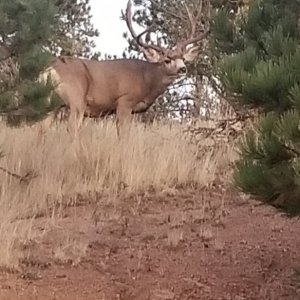T
TFinalshot
Guest
Billings Gazette
Wildlife groups, energy firms debate development
By MIKE DENNISON
Gazette State Bureau
HELENA - This weekend in Great Falls, hunting groups, wildlife managers and others will raise the alarm about how runaway oil-and-gas development in Montana could have a huge effect on wildlife.
"As we looked at this issue more and more, and what's occurred in Wyoming and Colorado, we (thought), 'We don't want to be like them,' " said Craig Sharpe, executive director of the Montana Wildlife Federation. "We don't want the large footprint, the damage that has occurred in Wyoming."
Yet oil-and-gas industry officials - some of whom will attend Saturday's symposium sponsored by the federation - wonder what the big deal is.
They agree that Montana could see more oil-and-gas development in the coming years. But they say it's not likely to be anywhere near the scale of Wyoming's gas boom - and therefore, Montana shouldn't rush into new restrictions to protect wildlife from something that isn't going to happen.
"We agree that we need to look at this holistically," said Dave Galt, executive director of the Montana Petroleum Association. "But if we have a problem, let's identify the problem. And there is a lot of disagreement on whether we have a problem or not."
The symposium is an educational event that the Wildlife Federation puts on for its members and the public every two years, Sharpe said. This year's goal is to "have hunters and anglers far more engaged in oil-and-gas development and the impacts of oil-and-gas development," he said.
Wildlife groups started becoming concerned early last year, in part after they saw a PowerPoint presentation by the state Department of Fish, Wildlife and Parks.
The presentation showed intensive natural-gas drilling and road building in Wyoming and Alberta, suggesting that the same could happen in Montana and possibly harm such species as sage grouse and mule deer.
"Energy development in Montana, along with urban development, will have more impact to fish and wildlife resources during the next 10 years than we have seen over the past 50," one of the slides in the PowerPoint presentation said.
Industry officials objected to the slide show, saying it grossly overstated what might happen in Montana.
For example, it showed extensive gas drilling and road building in Wyoming's Jonah field, which has reserves of about 10 trillion cubic feet of gas.
The entire state of Montana has only about 1 trillion cubic feet of natural-gas reserves, state energy officials say.
"We don't have the geological structure that created the Jonah field," said Tom Richmond, administrator of the Montana Board of Oil and Gas Conservation.
Wyoming's Powder River Basin, which has seen extensive drilling and production for coalbed natural gas, also has far greater reserves than does the same basin in Montana, Richmond said.
Oil production in Montana more than doubled from 2002 to 2006, natural-gas production increased about 17 percent, and the number of wells went from 8,000 to 10,000.
Yet Montana production is dwarfed by that in Wyoming, where thousands of wells produced nearly 20 times the natural gas produced in Montana in 2006 and 50 percent more oil.
Fish and game officials stopped showing the PowerPoint presentation last year, after the industry objected. They created a new one that looks at current oil and gas development in Montana, primarily near the North Dakota border.
T.O. Smith, energy coordinator for the state Department of Fish, Wildlife and Parks, said he'll show that presentation at the beginning of Saturday's symposium.
Those sites may have fewer wells than the Wyoming and Alberta sites shown in the original PowerPoint, but they still demonstrate the potential effects that natural-gas drilling can bring to a prairie landscape, Smith said.
Wildlife managers fear if this type of drilling occurs more often in other areas of Eastern Montana, species like the sage grouse could be harmed. They point to recent studies by University of Montana wildlife biologist Dave Naugle, showing that gas drilling and its accompanying roads can disrupt grouse breeding grounds.
"We're saying let's look at the most recent science and find a way to implement things that will protect the sage grouse in critical areas," said Larry Peterman, chief of field operations for the Department of Fish, Wildlife and Parks.
Based on the research, wildlife officials have proposed "buffer zones" around grouse breeding areas that could scotch drilling in large areas of Eastern Montana.
Industry officials say they would like to protect the sage grouse as well, to make sure it doesn't become listed as an endangered species. But they question whether Naugle's research should be the primary benchmark.
Naugle's research looked at effects of Wyoming drilling for coalbed natural gas in the Powder River Basin, an extensive gas field with more than 20,000 wells in a small area.
Again, Montana industry officials say that level of development isn't likely to occur in Montana.
Before any new restrictions are made, the industry wants to be consulted and perhaps have other research considered, Galt said.
Published on Friday, January 18, 2008.
Last modified on 1/18/2008 at 12:28 am
Wildlife groups, energy firms debate development
By MIKE DENNISON
Gazette State Bureau
HELENA - This weekend in Great Falls, hunting groups, wildlife managers and others will raise the alarm about how runaway oil-and-gas development in Montana could have a huge effect on wildlife.
"As we looked at this issue more and more, and what's occurred in Wyoming and Colorado, we (thought), 'We don't want to be like them,' " said Craig Sharpe, executive director of the Montana Wildlife Federation. "We don't want the large footprint, the damage that has occurred in Wyoming."
Yet oil-and-gas industry officials - some of whom will attend Saturday's symposium sponsored by the federation - wonder what the big deal is.
They agree that Montana could see more oil-and-gas development in the coming years. But they say it's not likely to be anywhere near the scale of Wyoming's gas boom - and therefore, Montana shouldn't rush into new restrictions to protect wildlife from something that isn't going to happen.
"We agree that we need to look at this holistically," said Dave Galt, executive director of the Montana Petroleum Association. "But if we have a problem, let's identify the problem. And there is a lot of disagreement on whether we have a problem or not."
The symposium is an educational event that the Wildlife Federation puts on for its members and the public every two years, Sharpe said. This year's goal is to "have hunters and anglers far more engaged in oil-and-gas development and the impacts of oil-and-gas development," he said.
Wildlife groups started becoming concerned early last year, in part after they saw a PowerPoint presentation by the state Department of Fish, Wildlife and Parks.
The presentation showed intensive natural-gas drilling and road building in Wyoming and Alberta, suggesting that the same could happen in Montana and possibly harm such species as sage grouse and mule deer.
"Energy development in Montana, along with urban development, will have more impact to fish and wildlife resources during the next 10 years than we have seen over the past 50," one of the slides in the PowerPoint presentation said.
Industry officials objected to the slide show, saying it grossly overstated what might happen in Montana.
For example, it showed extensive gas drilling and road building in Wyoming's Jonah field, which has reserves of about 10 trillion cubic feet of gas.
The entire state of Montana has only about 1 trillion cubic feet of natural-gas reserves, state energy officials say.
"We don't have the geological structure that created the Jonah field," said Tom Richmond, administrator of the Montana Board of Oil and Gas Conservation.
Wyoming's Powder River Basin, which has seen extensive drilling and production for coalbed natural gas, also has far greater reserves than does the same basin in Montana, Richmond said.
Oil production in Montana more than doubled from 2002 to 2006, natural-gas production increased about 17 percent, and the number of wells went from 8,000 to 10,000.
Yet Montana production is dwarfed by that in Wyoming, where thousands of wells produced nearly 20 times the natural gas produced in Montana in 2006 and 50 percent more oil.
Fish and game officials stopped showing the PowerPoint presentation last year, after the industry objected. They created a new one that looks at current oil and gas development in Montana, primarily near the North Dakota border.
T.O. Smith, energy coordinator for the state Department of Fish, Wildlife and Parks, said he'll show that presentation at the beginning of Saturday's symposium.
Those sites may have fewer wells than the Wyoming and Alberta sites shown in the original PowerPoint, but they still demonstrate the potential effects that natural-gas drilling can bring to a prairie landscape, Smith said.
Wildlife managers fear if this type of drilling occurs more often in other areas of Eastern Montana, species like the sage grouse could be harmed. They point to recent studies by University of Montana wildlife biologist Dave Naugle, showing that gas drilling and its accompanying roads can disrupt grouse breeding grounds.
"We're saying let's look at the most recent science and find a way to implement things that will protect the sage grouse in critical areas," said Larry Peterman, chief of field operations for the Department of Fish, Wildlife and Parks.
Based on the research, wildlife officials have proposed "buffer zones" around grouse breeding areas that could scotch drilling in large areas of Eastern Montana.
Industry officials say they would like to protect the sage grouse as well, to make sure it doesn't become listed as an endangered species. But they question whether Naugle's research should be the primary benchmark.
Naugle's research looked at effects of Wyoming drilling for coalbed natural gas in the Powder River Basin, an extensive gas field with more than 20,000 wells in a small area.
Again, Montana industry officials say that level of development isn't likely to occur in Montana.
Before any new restrictions are made, the industry wants to be consulted and perhaps have other research considered, Galt said.
Published on Friday, January 18, 2008.
Last modified on 1/18/2008 at 12:28 am

